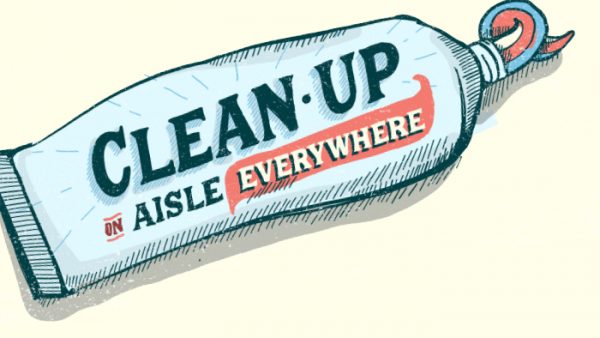
I needed toothpaste. I drink iced tea night and day, so I wanted to try something different for whitening. As I stood in the toothpaste aisle at Target, I was so overwhelmed that I literally started laughing. The aisle was probably 30’ long, 6’ tall and both sides were loaded with options. That’s 360 square feet of toothpaste choices. Toothpaste. It was crazy. I had neither the time, energy, nor interest in reviewing all those options. So I just grabbed my go-to Crest and headed out.
While we consumers crave choice, we’re also overwhelmed by the task of weighing our options. So, more often than not, we often find ourselves going to the same places, doing the same things, buying the same things and eating the same things. Over and over again.
It may sound kind of boring, but making smart decisions, when faced with lots of choices, is emotionally taxing. And there is some science behind limited choices making us happier. Studies have shown that when you give consumers infinite choice, selection becomes problematic and cognitive stress increases.
Take this example, published in USA Today last July:
Consider the relatively insignificant decision of what type of jam to buy. Researchers Sheena Lyengar and Mark Lepper used a simple experiment to show the effect of too much choice. One day they offered shoppers at an upscale market 24 types of specialty jams, complete with free samples. About 3 percent of people who tried a jam sample also purchased a full-size jar. Then, they cut back on choices and set up a table offering only six jams. About the same number of people tasted the jam, but of this group, 30 percent purchased a jar. Sales increased tenfold by offering less choice.
It may seem counterintuitive that fewer choices lead to more sales and happier consumers, but Angelika Dimoka, director of the Center for Neural Decision Making at Temple University, has shown why. To see how the brain reacts to information overload, she asked study participants to solve a complex problem, then added more pieces of information while watching their brains with an fMRI scanner.
As the brain took in more information, the prefrontal cortex (the region responsible for strategic planning and decision-making) became more and more active. This is what we would expect. But here’s the kicker: At a certain point, the participants simply couldn’t handle any more information, and their prefrontal cortexes went dark. Like an overloaded circuit, the brain simply shuts down when presented with too much information. Information overload, it seems, is a real phenomenon in our brains.”
Think about that. We desire and demand choice, but, at some point, it becomes literally too much for our brains to handle. Now think about what ecommerce has added to that mix. And you can see why shoppers are becoming overwhelmed.
So, what about the 800-pound gorilla? Amazon. It’s the epitome of choice. Why does Amazon, with its millions and millions of available products, continue to grow while other large players shrink?
They’ve managed to make ‘choice’ less emotionally taxing and the whole process easier. They’ve helped us manage our lives. You search for what you need. You filter the options based on your preferences (price, ratings, newest, etc.). You add to cart. And, for Prime members, there is one simple click and you’re done. You don’t have to get out your credit/debit card or fill out any forms. An address book keeps all your “Ship to” info. Returns are easy. You can even talk to Alexa while cooking or cleaning to create your shopping list. You can set up recurring delivery and more. They are fast and dependable on delivery. In fact, Amazon was rated as the second most trusted organization behind the military in a recent consumer survey
by Georgetown University.
So what does this all mean for marketers?
Think through your customer’s experience. Every single step of it. Do your research and understand their needs, wants, desires and obstacles. Look for ways to make the process of doing business with you easier, simpler and faster. Constantly make incremental improvements to each step of the process.



